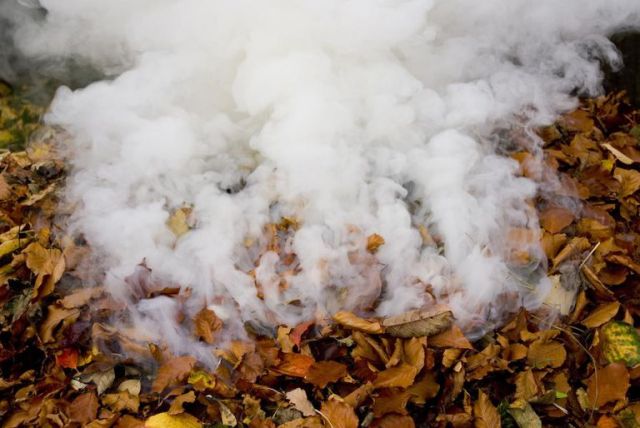Educators need to encourage students to say their own names when society doesn’t.
Friday, September 25, 2020
ANDRE PERRY: Teaching about Breonna Taylor is a 'must' for teachers
NYC Public School Parents: Student discontent and high attrition at Success Academy; hearings next week about their intent to ditch three planned high schools in Brooklyn
In 2014, Success Academy held multiple press conferences and sued the city, demanding public school space for three of its schools while granting space for five other of its schools. Mayor de Blasio explained that these three would mean displacing disabled D75 students. The city ended up renting and paying for private space for these schools at great expense. In 2017, they launched a $5M television ad campaign for more middle school space.
Success Academy’s argument has always been that they just don’t have enough space for the huge wait lists of families clamoring to be in their schools. We must open more! We must give them more space! [And yet studies show that half of the students accepted at the school never enroll.]
Revising their charters and moving students around isn’t new to Success Academy. In recent years, they’ve changed planned enrollments at their middle schools and shuffled students from one area to another. What is notable about this hearing is there will be NO Success Academy high school in Brooklyn in spite of having five Success Academy middle schools in the borough.
Breaking News: @AERA_EdResearch weighs in on Censoring attempts from Politicians | Cloaking Inequity
Just as a democratic society needs to support the production of scientific and scholarly knowledge free of political manipulation or intrusion, we need educational systems that are not politicized and censored, but rather seek the truth by exploring even the most difficult truths. We need to teach students to engage on difficult topics with intellectual integrity and respectful discourse. We are troubled by actions that appear to reject these principles, and especially on topics as salient to U.S. society as equality and justice for all. We must also respect the rule of law in our educational systems, including Congressional prohibitions of federal government prescriptions and prohibitions of curriculum content in our schools.[2]https://www.aera.net/Newsroom/Statement-in-Support-of-Anti-Racist-Education
HOW MUCH IS TOO MUCH? Screen Time Guidelines For Distance Learning - capradio.org
Ruth Bader Ginsburg and the case of the 13-year-old girl strip-searched at school - The Washington Post
Schott Foundation Adds New Members to its Board of Directors | Cloaking Inequity
The Schott Foundation for Public Education is pleased to announce six new members elected to its Board of Directors. “Our country is at an important intersection where racial equity is central to our ability to challenge present conditions and create pathways to a more resilient future, said Carolina Espinal, Schott Board Chair. “On behalf of the Board, I am honored to welcome these immensely talented leaders to join Schott in advancing social justice through a movement for public education that provides all students – and communities – an opportunity to learn and thrive.”“These diverse leaders are deeply committed to Schott’s mission and bring a wide range of invaluable expertise and experience to our team,” said John H. Jackson, President & CEO.

![]() The Schott Foundation for Public Education is pleased to announce six new members elected to its Board of Directors. "Our country is at an important intersection where racial equity is central to our ability to challenge present conditions and create pathways to a more resilient future, said Carolina Espinal, Schott Board Chair. “On behalf of the Board, I am honored to welcome these immensely talented leaders to join Schott in advancing social justice through a movement for public education that provides all students - and communities – an opportunity to learn and thrive."
The Schott Foundation for Public Education is pleased to announce six new members elected to its Board of Directors. "Our country is at an important intersection where racial equity is central to our ability to challenge present conditions and create pathways to a more resilient future, said Carolina Espinal, Schott Board Chair. “On behalf of the Board, I am honored to welcome these immensely talented leaders to join Schott in advancing social justice through a movement for public education that provides all students - and communities – an opportunity to learn and thrive."
“These diverse leaders are deeply committed to Schott’s mission and bring a wide range of invaluable expertise and experience to our team," said John H. Jackson, President & CEO.
 | Alandra WashingtonVice President for Transformation and Organizational Effectiveness at the W.K. Kellogg Foundation |
 | Amir WindomAn A&R executive working with major film companies, including Sony Pictures, Universal Pictures, Lionsgate Films |
 | Dorian Burton, Ed.L.D.Chief Program Officer and Assistant Executive Director at the William R. Kenan, Jr. Charitable Trust in Chapel Hill, NC |
 | Julian Vasquez Heilig, Ph.D.Dean of the University of Kentucky College of Education |
 | Kyle SerretteSenior policy analyst at the National Education Association (NEA) |
 | Michael S. WotorsonSenior Community Investments Officer at the Hartford Foundation for Public Giving in Hartford, CT |
Dr. Leslie Fenwick Explains Why the “Schemes” of Reformers Keep Failing | Diane Ravitch's blog
Teacher Tom: To Remind Us to Keep Inventing it for Ourselves
Arizona: Charter Leader Sentenced to 3+ Years in Prison for Misappropriation of $2.5 Million | Diane Ravitch's blog
A Note to My Leaf-Burning Neighbors | Live Long and Prosper
Besides being an irritant, leaf smoke contains many hazardous chemicals, including carbon monoxide and benzo(a)pyrene. Carbon monoxide binds with hemoglobin in the bloodstream and thus reduces the amount of oxygen in the blood and lungs. So carbon monoxide can be very dangerous for young CONTINUE READING: A Note to My Leaf-Burning Neighbors | Live Long and Prosper



























